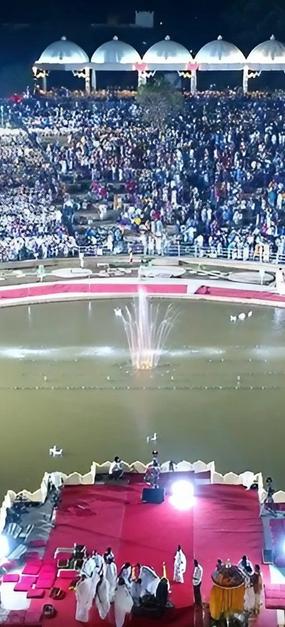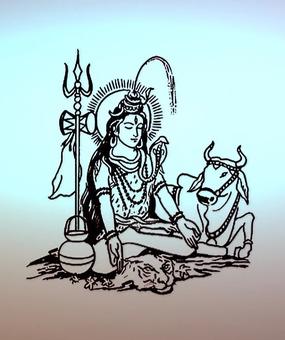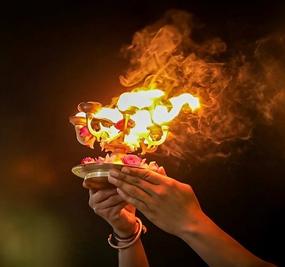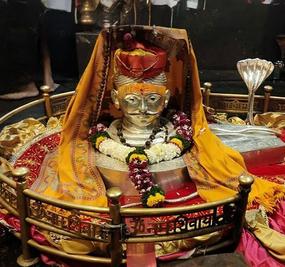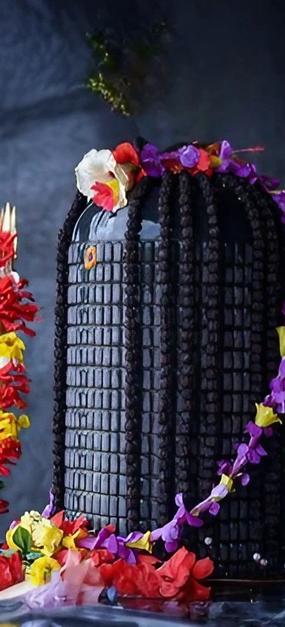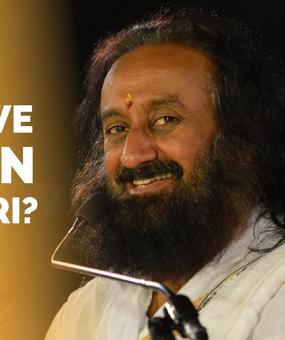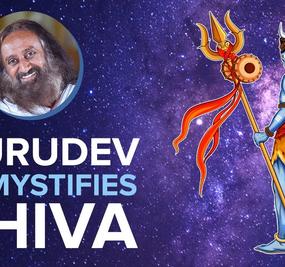Jyotirlingas are sacred shrines of Lord Shiva; it is believed that Lord Shiva himself visited these places and hence they have a special place in the hearts of devotees. There are 12 of them in India.
Jyotirlinga means ‘column or pillar of light’. The ‘stambha’ symbol represents that there is no beginning or end.
When Lord Brahma and Lord Vishnu had an argument about who was the supreme god, Lord Shiva appeared as a column of light and asked each one to find the ends. Neither could do it. It is believed that the places where these columns of light fell is where the jyotirlingas are located.
Grishneshwar means ‘Lord of compassion’.

Where is the Grishneshwar Jyotirlinga located?
It is located in Ellora near Daulatabad in Maharashtra, India.
History of Grishneshwar Jyotirlinga
This temple has been mentioned in the Shiva Purana and Padma Purana.
The site was destroyed by the Delhi Sultanate in the 13th-14th century AD. The temple was reconstructed by Maratha ruler Shivaji’s grandfather, Maloju Bhisale of Verul, in the 16th century AD.
The current structure was built by Queen Ahilyabai Holkar of Indore in the 18th century AD after the fall of the Mughal Empire.
Special features of Grishneshwar Temple
The temple, built of red rocks, is composed of a five-tier spire or shikara. You can see the Dashavatars (ten avatars) of Lord Vishnu carved in red stone.
There is a court hall built on 24 pillars on which you will find carvings of various legends and mythologies of Lord Shiva. The sanctum houses the east-facing linga. You will also find a statue of Lord Shiva’s mount, Nandi, the bull in the court hall.
What is the story behind Grishneshwar Jyotirlinga?
There are a couple of legends associated with this jyotirlinga.
One legend says that there was once a woman named Kusuma, who would worship Lord Shiva every day, immersing the Shiva Linga in a tank along with her prayers. Her husband’s first wife was jealous of her devotion and murdered her son.
Although Kusuma was grief-stricken, she kept up her faith and her devotion to the Lord. It is said that Lord Shiva was so pleased with her devotion that he brought her son back to life. Kusuma requested the Lord to stay on, which is why Lord Shiva manifested himself as a jyotirlinga here.
Another legend has it that there was a Brahmin called Brahmavetta Sudharm, who lived with his wife Sudeha in the Devagiri mountains. The couple was childless, so Sudeha got her sister Ghushma married to her husband. On her sister’s advice, Ghushma would make lingas, worship them, and immerse them in the lake nearby. She was, finally, blessed with a baby boy. Over time, Sudeha became jealous of her sister and murdered her son and threw him into the very lake where her sister would immerse the lingas.
Though Ghushma’s daughter-in-law told her that Sudeha had a hand in the murder of her son, Ghushma continued her daily rituals believing totally in the Lord’s mercy. And true to her beliefs, as she went to immerse the linga, she saw her son walking towards her. Lord Shiva appeared before her and told her of her sister’s heinous deed.
Ghushma requested the Lord to forgive her sister. Pleased, the Lord granted her a boon. She asked him to stay on in that place, which is why he manifested himself as a jyotirlinga called Ghushmeshwar. The lake in which Ghushma immersed the lingas was called Shivalaya.
Interesting facts about Grishneshwar Jyotirlinga
- Grishneshwar is also called Ghushmeshwar and Kusumeshwar.
- Men are required to go bare-chested into the temple.
- This is the smallest jyotirlinga temple in India.
- The UNESCO World Heritage site, Ellora caves, is less than a kilometer away.
- While you can visit this spiritual spot at any time in the year, it would be best to visit it during the winter months – between October and March. Visiting this ancient and divine destination during Mahashivratri would be the ultimate treat for any devotee!
Read about other Jyotirlinga Temples
- 12 Jyotirlingas in India
- Trimbakeshwar Jyotirlinga
- Rameshwaram Jyotirlinga
- Kedarnath Jyotirlinga
- Grishneshwar Jyotirlinga
- Mahakaleshwar Jyotirlinga
- Mallikarjuna Jyotirlinga
- Bhimashankar Jyotirlinga
- Omkareshwar Jyotirlinga
- Nageshwar Jyotirlinga
- Somnath Jyotirlinga
- Baidyanath Jyotirlinga
- Vishwnath Jyotirlinga



